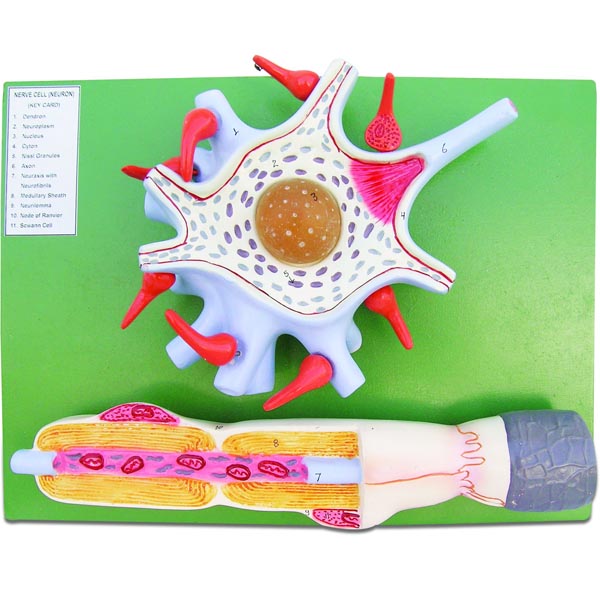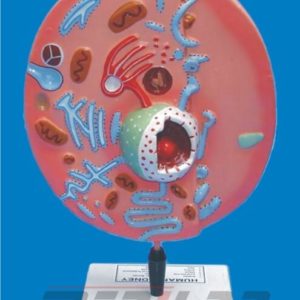Description
Nerve Cell / Neuron Model, is the basic functional unit of the nervous system. Neurons are specialized cells that are designed to receive and transmit electrical and chemical signals between different parts of the body.
A typical neuron has three main parts: the cell body, dendrites, and axons. The cell body contains the nucleus and other cellular components, while the dendrites are specialized structures that receive signals from other neurons. The axon is a long, thin extension of the cell body that transmits signals to other neurons or to muscles or glands.
Neurons communicate with each other at specialized structures called synapses, where signals are passed from one neuron to another. This communication is accomplished through the release of chemical neurotransmitters, which bind to receptors on the target neuron and modify its electrical activity.
The electrical activity of neurons is also regulated by ion channels, which are specialized proteins that control the flow of ions into and out of the cell. This electrical activity is responsible for the generation of action potentials, which are brief changes in the electrical potential of a neuron that propagate along its axon and trigger the release of neurotransmitters at the synapse.
In summary, neurons are highly specialized cells that play a crucial role in transmitting and processing information in the nervous system. They are the building blocks that allow us to sense, think, move, and feel.







